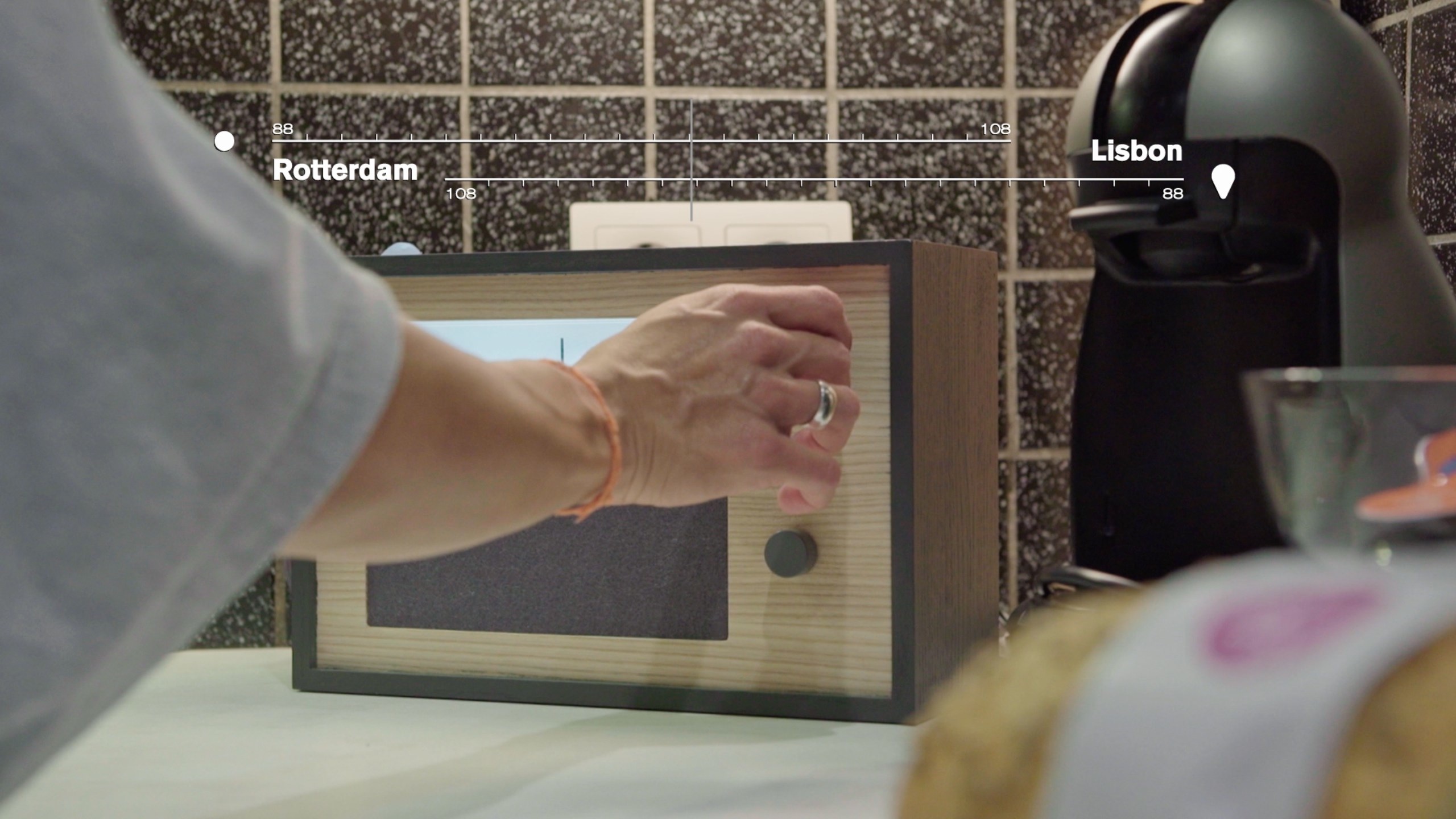Connected everyday lab
Issue: XXIII.4 July - August 2016Page: 18
Digital Citation
Authors:
Elisa Giaccardi, Marco Rozendaal
How do you describe your lab to visitors? The Connected Everyday Lab explores how to facilitate thoughtful design in a world where people, artifacts, and technology increasingly merge. The group researches the social opportunities and ethical implications of emerging technological paradigms such as the Internet of Things, social robotics, and smart materials. We use design thinking as a strategy for speculative innovation; and we use accelerated research through design approaches to prototype and probe our designs in the real world in collaboration with societal and industry partners. Our areas of application include healthcare, sustainability, and the fostering of inclusive, innovative, and reflective societies.
What is a unique feature of your lab? The Connected Everyday Lab is a transdisciplinary research group in the School of Industrial Design Engineering (IDE) at Delft University of Technology. We pursue design research as an effort conducted by investigators from different disciplines building upon the depth of their specific knowledge, but working together to open up approaches that move beyond disciplinary narrowness. Given the scale and complexity of the challenges our society is facing, from pollution to aging to radically new forms of social interaction and value creation, we believe this is critical for design research to remain relevant and have a lasting impact. Our research themes reflect this transdisciplinary approach. They concern theoretical and methodological reworkings of the asymmetry between people and things (i.e., things as co-ethnographers and things as co-designers); conceptualizations of products as intimate partners empowering people in their daily lives (i.e., objects with intent); investigations of the long-lasting effects of experience on how individuals, communities, and crowds see and act in the world (i.e., lasting encounters); and approaches that help us grasp the complexity of designing material objects with an immaterial counterpart of computation, data, and connectivity (i.e., im/materials).
 |
Patrizia working on a paper surrounded by books and prototypes. |
How many people are in the lab, and what is the mix of backgrounds and roles? Our lab is supervised by one full professor (Elisa Giaccardi) and two assistant professors (Marco Rozendaal and Arnold Vermeeren). Currently, the lab includes three Ph.Ds (Holly Robbins, Patrizia D'Olivo, Boudewijn Boon), one new postdoc soon to be hired, and about 20 master's students working with us on either research projects or graduation projects. With funding from Design United, the platform for design research in the Netherlands, we also have on our team two visiting professors (Chris Speed, Edinburgh University, and Jeroen Raijmakers, Philips Design) collaborating with us on joint research projects.
 |
Wubwub, a design exploration on the expressive qualities of social robots. |
Briefly describe a day in the life of your lab. Most of the members of our lab are physically located at the ID-Studiolab, a design research community and prototyping facility of the Department of Industrial Design. On a regular day, you will encounter us mingling with other design researchers and engaging in interesting discussions, surrounded by prototypes and sketches. You may bump into one of Boudewijn's Stickz, walk down the hall and wash your hands with Mizu by Holly Robbins, or see Patrizia writing a paper surrounded by a mountain of books and mock-ups.
What is one feature of your lab that you could not do without? We work as a collective, and we value conversation. We also like to bring this attitude to design advocacy, through a continuous and vibrant connection to design practitioners in the field. For example, the IoT Design Manifesto (http://iotmanifesto.org/) is a series of guidelines for responsible design in a connected world. The message of this manifesto not only speaks to us in the academic context, but also has been trumpeted by futurist Bruce Sterling and shared with a general audience in WIRED magazine. Another example is Things2Things (http://things2things.nl), a series of lectures, workshops, and exhibitions exploring the role that design can play in the emerging landscape of the Internet of Things. The initiative, funded by Design United, reaches out to about 80 design professionals and researchers between the Netherlands and Belgium. These activities also inform our teaching.
 |
AscoltaME, a "tin can telephone," tactfully encouraging disrupted families to talk. |
What is one feature of your lab you want and do not have? Our lab's weekly lunch meetings would be greatly enhanced if a chef catered them. We can dream!
We value design as an integrative and transformative form of research.
What is the one thing you see as most important about the work you do there? We value design as an integrative and transformative form of research. Our lab has defined a series of themes around which we actively setup "crossovers" with other labs and research groups within and outside our faculty. A crossover is medium- to long-term collaboration between two or more research groups, which commit to jointly investigate the knowledge space emerging at the intersection of their research agendas and push the envelop of design research. Crossovers are project-driven and can be implemented in many ways, from a pipeline of demonstrators or graduation projects to a funded research project. The School of Industrial Design Engineering (IDE), in which our lab is embedded, has three large departments of industrial design, design engineering, and product innovation and management. These offer a broad range of disciplinary and practical expertise, and make IDE extraordinarily positioned to facilitate such crossovers.
Copyright held by authors
The Digital Library is published by the Association for Computing Machinery. Copyright © 2016 ACM, Inc.



